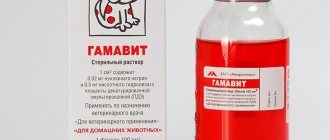HomeInternational transportation Animals
Transportation of animals abroad: safe, prompt, affordable!
carries out various international transportations of animals and birds. We will deliver your pet, breeding and slaughter animals anywhere in the world. We offer both one-time transportation and long-term contracts on favorable terms. Transportation of animals abroad is carried out in a format that is comfortable for you.
Transportation of pets
When transporting pets using different modes of transport, the requirements of specific carriers should be taken into account.
Transportation of animals by air
Animals transported on an airplane can be in the cabin with the owner or placed in the luggage compartment. In the first case, the airline's consent is required.
The following factors influence obtaining a permit:
- The pet must be included in the list of species eligible for air transportation of animals: cats, dogs, birds, ferrets;
- Weight and size of animals, their number;
- No antagonistic animals in the salon.
Animal transport hygiene must be strictly observed. Transportation is carried out only in a cage or durable container with a waterproof bottom with an absorbent coating. Reliable closure and ventilation are essential.
Transportation of animals by rail
- Non-commercial transportation of pets is carried out in separate compartments in the amount of no more than 2 animals. Since August 12, 2014, railway transportation of animals in reserved seat accommodation is prohibited;
- Container dimensions - up to 180 cm (in three dimensions);
- The route includes only those stations that are equipped with border veterinary posts.
Transportation of animals by road
When delivering cargo by road, you should remember that registration of transportation of certain types of animals: parrots, turtles, monkeys, pythons is practically prohibited. Transportation of animals by road requires the availability of documents similar to those required for other means of transportation.
How to transport an animal abroad
To take a pet abroad by air, rail or car, you must obtain an international veterinary certificate. This must be done at the border veterinary control post (BCP) at the checkpoint across the state border of the Russian Federation. PKVP are located at the international airports Domodedovo, Vnukovo, Sheremetyevo.
To obtain a veterinary certificate, the owner of the animal must provide veterinary certificate No. 1 and/or a veterinary passport indicating the date of vaccination of the animal (including against rabies), series, number and manufacturer of the vaccine, as well as a mark from the state veterinary institution on a clinical examination 5 days in advance before sending.
Transportation on long-distance trains (no more than one seat per issued ticket and no more than two small pets or two birds per seat) is allowed for a fee in separate compartments of a rigid carriage (except for carriages with double compartments (SV) and luxury cars). Large dogs must be transported muzzled and with a leash, in a separate compartment of a compartment carriage, except for luxury carriages, under the supervision of their owners or accompanying persons, with payment of the full cost of all seats in the compartment without additional payment for their transportation, depending on the number of dogs traveling in the compartment and their owners or accompanying persons must not exceed the number of seats in the compartment. Animals and birds, the transportation of which may threaten the life and health of passengers and carrier employees, are not allowed for transportation.
On commuter trains, it is permitted to transport small dogs without carriers, muzzled, on a leash, and cats under the supervision of their owners or accompanying persons. Large dogs are transported muzzled and on a leash, in the vestibule of a commuter train (no more than two dogs per carriage), under the supervision of their owners or accompanying persons, with payment of the cost of their transportation. A fee is charged for the transportation of small domestic (pet) animals, dogs and birds on commuter trains.
guide dogs with them in all types of carriages free of charge. There is no need to prepare transportation documents. The guide dog must have a collar and muzzle and be located at the feet of the passenger it is accompanying.
The conditions under which pets can be transported on an airplane must be checked with the airline operating the flight.
Special requirements for transporting animals
When planning to cross the border, you should definitely familiarize yourself with the regulations governing the import of animals of the countries you are going to visit. The rules for transporting animals across the border are strictly observed.
- When visiting EU countries, at least 3 months must pass from the birth of a pet;
- The animal can be quarantined for up to six months;
- Some states do not allow the import of fighting breed dogs;
- Individual airline and rail companies may have their own requirements regarding the type of small animal carrier;
What documents are required when transporting pets?
Transporting animals across the border requires compliance with certain formalities and the availability of a full set of documents. Otherwise, crossing the borders of the Russian Federation is not possible.
One of the basic rules when preparing the necessary papers is the mandatory presentation of the four-legged traveler to all authorities.
Veterinary passport of international standard. If it is missing, a veterinary certificate (form No. 1) , the issuance of which is regulated by the Ministry of Agriculture for animals transported abroad.
When crossing the border of the Russian Federation, veterinary inspectors from the Office of Rosselkhoznadzor issue a certificate of form No. 5A for presentation at customs. On the way back, certificate No. 1 is returned to the owner in exchange for a certificate.
Important! The veterinary certificate is valid for 5 days from the date of its issue.
The document submitted at the border must contain comprehensive information about the animal: notes on microchipping, vaccinations, deworming, vaccinations, treatments performed and various studies. Ectoparasitic and anthelmintic drugs, as well as rabies vaccines, should be selected in accordance with the standards established in the country chosen for visiting.
Important! The animal must be vaccinated against rabies at least a month before the trip, but no more than a year before it.
European Union Certificate. Required when visiting one of the countries included in this association. It is an annex to the international veterinary certificate. Transporting animals to many European countries is impossible without it;
Certificate of vaccination according to EU Directive 998/2003. Required when visiting EU countries
Certificate of research results on antibody titer (presence of antibodies to the rabies pathogen). Required for travel to Sweden, Ireland, Great Britain.
Permission from the Veterinary Department of the Ministry of Agriculture of the Russian Federation . Mandatory when transporting turtles, parrots, as well as cats and dogs (more than two individuals) by rail (in some cases by air);
Baggage ticket , the tariff depends on the actual weight of the animal.
An additional package of documents or information about the availability of vaccinations when visiting a specific country, the requirements of which may differ from the standard list.
You should familiarize yourself with information about the additional list in advance to avoid unpleasant situations at customs
Certificate from the Felinological Association confirming the lack of breeding value of the transported animal (cat). Not always required.
Important! A special department of the Russian Cynological Federation has canceled the requirement for mandatory obtaining permission to export animals (dogs) of breeding value.
Permission from Rosselkhoznadzor for non-commercial export - in case of export of cats and dogs in quantities exceeding 2 individuals;
Rosselkhoznadzor on the transportation of animals within the Russian Federation
The Office of Rosselkhoznadzor for the Chelyabinsk Region reports with enviable regularity that at the airport, employees of the supervisory department detain animals and birds that are imported by residents of Armenia, Tajikistan, and Uzbekistan into the territory of Russia. If documents for animals are missing or filled out incorrectly, they have to be returned back to the country of departure. The owners are unhappy. It is also uncomfortable for the animals, who wait for several days for the opportunity to be sent back. What you need to know to avoid discomfort and punishment. We asked Irina Kudryashova, head of the department of border veterinary control at the State Border of the Russian Federation and Transport of the Office of Rosselkhoznadzor for the Chelyabinsk Region, to answer these questions.
1. Transportation rules
— When transporting animals within the Russian Federation by any type of transport, you must have a veterinary certificate of Form No. 1. This veterinary accompanying document is drawn up and issued by institutions subordinate to the executive authority of the constituent entity of the Russian Federation in the field of veterinary medicine. This veterinary accompanying document characterizes the territorial and species origin, veterinary and sanitary condition of the accompanying cargo, the epizootic state of the place of its exit and allows the identification of the cargo. The document is issued for all types of animals, for all types of animal products, feed and feed additives subject to procurement, transportation, processing, storage and sale.
I note that when transporting more than five animals, an inventory certified by the seal of the institution subordinate to the executive body of the constituent entity of the Russian Federation in the field of veterinary medicine is attached to the veterinary accompanying document. To register a pet, you need an animal passport with marks of vaccination against rabies, done no earlier than 30 days and no later than 12 months before the trip. Before vaccination, mandatory deworming is carried out.
2. Import, export, transit of animals
— You need to know that clinically healthy animals from territories free from infectious animal diseases are allowed to be imported into the customs territory of the customs union and (or) moved between the parties. Veterinary control of animals is carried out during their loading and at the place of destination with mandatory quarantine measures in the sending country and the receiving country of the animals in accordance with the Unified Veterinary Requirements. The need, duration and conditions of quarantine are determined by the authorized body of the party into whose territory the animals are planned to be imported.
Let me note, most importantly, loading animals without veterinary control is not allowed. The import of no more than two dogs and cats transported for personal use, as well as sports horses without an import permit and quarantine, is allowed, accompanied by an international passport. Such a passport is equivalent to a veterinary certificate. However, there is one condition: it must be marked by the competent authority that a clinical examination has been carried out within 5 days before shipment.
The importation of animals into the customs territory of the customs union, let us recall that the customs union currently includes three countries - Russia, Kazakhstan, Belarus - is carried out with an import permit issued by the competent authority of the party into whose territory they are imported. When moving animals across the customs territory of the Customs Union, such permission is not required.
Transit through the customs territory of the Customs Union of animals is carried out under a transit permit issued by the party through whose checkpoint the customs border of the Customs Union is supposed to be crossed upon import.
When exporting animals from the customs territory of the Customs Union, the issuance of export permits and registration of veterinary certificates is carried out by the authorized body in accordance with the legislation of the relevant party.
During the entire transportation period, animals must be accompanied by veterinary accompanying documents issued by the competent authorities in the field of veterinary medicine.
To export animals from the Russian Federation to third countries, you must have an international veterinary certificate; in the case of export to the countries of the Customs Union, a veterinary certificate of the Customs Union. An international veterinary certificate is issued instead of a veterinary certificate of form No. 1.
For all questions regarding the movement of animals, citizens can contact the Rosselkhoznadzor Office for the Chelyabinsk Region in writing and electronically. Phone for information. Address: Chelyabinsk, st. Ternopilskaya, 21. Website address of the supervisory authority, where you can submit a question in electronic form www.rsn-chel.ru
Transportation of birds and animals
Transportation of birds and animals (not breeding), as well as bees, involves replacing the veterinary certificate of Form N 1 with a veterinary certificate of Form N 5a.
Animals on an airplane are transported in containers or cages of sufficient size with good ventilation and secure locking. Bird cages are provided with a thick blanket that does not allow light to pass through, a bottom with an absorbent coating and sides.
Transportation of birds by rail is carried out in multi-tier cars with containers for water and drinking securely fixed to the floor, solid walls and floors that do not allow liquid to pass through. Small consignments of poultry and small animals can be transported in boxes in baggage cars.
Important! In a number of countries there is a ban on the import of certain species of animals and birds.
Amount of customs duty and VAT
The customs payment includes a duty in accordance with the classification code of the Commodity Nomenclature of Foreign Economic Activity. Individuals are exempt from paying customs duties, but only if the value of the declared animal is below 500 euros and its weight together with the cage does not exceed 25 kg. If duty-free import standards are exceeded, the payment is calculated in part of the excess of the standards, namely 30% of the amount over 500 euros and 4 euros for each kilogram of weight exceeding 25 kg. That is, if the cost of the animal is 550 euros, then 30% of 50 euros is paid, if the weight is 30 kg, then the duty for 5 kg is 20 euros.
If the animal is transported by entrepreneurs or legal entities, then the rules of duty-free import do not apply: all due customs duties are paid and declaration is carried out.
Pets are classified depending on their purpose:
- domestic;
- agricultural;
- tribal;
- for zoos and circuses;
- for research centers.
Depending on this, the amount of duty and VAT varies:
- If cats, dogs, guinea pigs, parrots, turtles, insects and other domestic animals are imported, the duty rate is 5%, VAT is 10% or 20%, depending on the sending country.
- When importing farm animals, various customs concessions are possible. Pedigree purebred animals are not subject to tax, and in general, the customs duty does not exceed 5%. VAT will be 20% for the import of variable animals and 10% if the animals are imported as food products or are sports horses. Duty-free import rules also apply to poultry. VAT for breeding birds will be 20%, for birds for food purposes – 10%.
- If animals are imported for the purpose of being used in circuses and zoos, then the customs payment in most cases will be 5%, VAT – from 10%. If live goods are brought for research centers, then a duty-free regime applies.
Note! There is no excise tax for customs clearance of animals.
If small quantities sent for export are subject to registration, then individuals are exempt from paying the duty. Legal entities pay a fee for customs clearance.
Transportation of farm animals
carries out international transportation of pigs, cattle, sheep and other farm animals in livestock carriers of various tonnage with the provision of forwarding services. We strictly comply with veterinary requirements when transporting animals. The transport used fully complies with the strict requirements for transportation. Livestock carriers with anti-slip floors are equipped with drinking bowls, reliable locks and a satellite tracking system. We guarantee excellent animal care, humane treatment, timely feeding and safety, and trouble-free passage through veterinary control points. Before loading animals, vehicles are thoroughly cleaned and disinfected. (cars, car bodies, etc.).
Transportation of farm animals requires the availability of accompanying documents both for them and for the feed required during transportation.
List of documents for transportation of farm animals
Transporting farm animals requires compliance with formalities and a set of documents. Otherwise, crossing the borders of the Russian Federation is not possible:
- Veterinary certificate and veterinary certificate;
- Permission from the chief state veterinary inspector of the Russian Federation, in writing. To obtain it, a request is required from the veterinary department of the relevant constituent entity of the Russian Federation. Registration is carried out with the participation of specialists from Rosselkhoznadzor;
- Written consent from the regional veterinary department and the territorial department of Rosselkhoznadzor - contains information about the chosen route and proposed stopping points. Transportation of animals by rail only on those routes where stops along the route are equipped with veterinary control points;
- A list indicating the number and nickname in the “special notes” column – for commercial animals (required when transporting animals in quantities of up to 5 heads);
- Inventory with the seal of a veterinary institution (required when transporting a herd of more than 5 heads).
Features of customs clearance of animals
The procedure for passing veterinary control is determined by the Federal Law “On Veterinary Medicine”. If the transportation of animals is carried out by a legal entity or an individual entrepreneur, a corresponding agreement must be concluded between it and Rosselkhoznadzor. Checks are carried out at specialized customs posts where the veterinary control post is located. If there is no such post, then the foreign trade participant must send an application to Rosselkhoznadzor, indicating the place and date of customs clearance of animals.
ATTENTION! We work only with legal entities.
If the transportation of animals is carried out by an individual, then at the customs border it is necessary to present to the veterinarian the veterinary passport of the animal, which contains information about vaccinations. A passport is issued in any country and is issued in advance at the appropriate institution. If the animal is transported by a legal entity, it must provide a veterinary certificate at the checkpoint. This is an official document drawn up with the participation of Rosselkhoznadzor. For exported animals, a certificate must be ordered from the veterinary service or from a veterinarian. For imported animals, you need to prepare a certificate issued by the veterinary service of the sending country.
Transportation of breeding animals
Our company transports breeding and slaughter animals from abroad to Russia and vice versa. During transportation, highly productive animals are placed in insulated containers of sufficient size. For example: transportation of breeding New Zealand white rabbits.
| Transportation of breeding animals. Rabbits from New Zealand |
Transportation of breeding animals involves replacing the certificate of form No. 1 with form No. 5C when passing the border veterinary checkpoint. It is accompanied by the consignment note of the Agreement on International Freight Transport by Rail.
Transportation of slaughter animals
Delivery of animals and transportation of slaughter animals is carried out by rail, road and water transport at high speed and compliance with all precautions to protect live cargo from diseases and infections. For transportation, it is necessary to prepare an accompanying document - a veterinary certificate with information about the route, the number of heads, the epizootic situation in the harvesting areas, as well as data on the research carried out, vaccination, and the presence of an allergic reaction. The certificate is valid for 3 days.
Transportation of slaughter animals requires compliance with established standards. They are subject to inspection by a representative of the transport veterinary and sanitary service. Cars and platforms are pre-cleaned.
Animals are often transported by road. Preparing animals for transportation and the necessary formalities are similar to the corresponding procedures for railway transport.
Features of transporting animals
Animals are delivered in cages, containers, and enclosures. The requirements for temperature, ventilation and humidity must be observed, and the possibility of complying with hygienic requirements is also provided. Transportation conditions are determined by the species of the animal and the seasonality of transportation. However, in any case, transportation is carried out in specially equipped vehicles.
Animals need to be provided with comfortable conditions not only during transportation, but also while they are in a temporary storage warehouse: they need to be fed and watered on time. The processing time when contacting a customs representative is several hours, in general, it does not exceed a day. Animals are transported by trains, airplanes and vehicles. They can be delivered from Europe, America and Asia. The last direction is the most developed at the moment.
Since the transportation of live animals involves some maintenance difficulties, the timing of transportation also plays an important role. Delays during customs clearance are unacceptable. It is quite difficult to avoid problems and increased delivery times due to the significant amount of paperwork required and strict requirements regarding compliance with registration rules. Any errors and typos negatively affect the timing of customs procedures. A delay can even occur due to incorrect punctuation. That is why it is advisable to contact a licensed customs representative, especially if the shipment is being carried out for the first time.
The customs representative of SB Cargo will provide any assistance in the customs clearance of animals during import, export, customs transit at any customs posts. Breeding centers, agricultural enterprises, cynological organizations, circuses and zoos cooperate with us. We know how to carry out customs clearance of breeding and domestic animals, purebred dogs, cats and others, those animals that are transported to participate in competitions and exhibitions. Our specialists advise on any issues related to the customs clearance of animals and help solve emerging problems. The customs representative of SB Cargo will place the animals at the temporary storage warehouse and provide comfortable conditions for them, and help plan the delivery route to their destination. In order not to worry about the condition of the cargo and delivery times, call us by phone or write by email
Types of animal transportation
offers transportation of animals and birds in various ways. Types of animal transportation: air transport, railway, animal transportation by road. Cargo of any volume and category of complexity will be delivered on time. We undertake the preparation of the package of documents and compliance with the necessary formalities. Complete safety of cargo is guaranteed. The cost of transporting animals in our company is very affordable, as we work without intermediaries.
Benefits of working with us
- We work 7 days a week 365 days a year
- Highly qualified specialists with extensive experience
- We bear full responsibility for the clearance of goods at customs
- We process any goods at any customs in Russia
Stages of customs clearance of animals
According to the Customs Code of the Russian Federation, the procedure for customs clearance of animals includes:
- preparation and submission of customs declaration;
- payment of payments stipulated by the rules;
- animal inspection;
- release of cargo for free circulation after receipt of the declaration.











